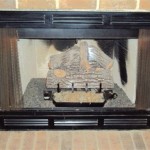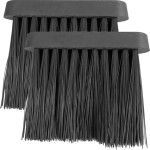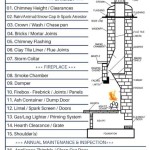Gas Fireplace Inserts: Direct Vent Systems Explained
Gas fireplace inserts offer a convenient and efficient way to upgrade an existing masonry or prefabricated fireplace. Among the various types available, direct vent gas fireplace inserts stand out for their safety, efficiency, and versatility. Understanding the intricacies of direct vent systems is crucial for homeowners considering this upgrade option.
A direct vent gas fireplace insert is a self-contained heating appliance that is installed within an existing fireplace opening. These inserts operate by drawing combustion air from outside the home and venting exhaust gases directly outdoors through a sealed, coaxial venting system. This design distinguishes them from other types of gas fireplace inserts and offers significant advantages in terms of safety and performance.
The coaxial venting system consists of two concentric pipes. The inner pipe expels exhaust gases, while the outer pipe draws fresh air for combustion. This closed-loop system prevents the introduction of harmful combustion byproducts into the living space, making direct vent inserts a safer option compared to other methods of gas fireplace venting.
Key Point 1: Understanding Direct Vent System Components
The direct vent system is composed of several essential components working in concert to ensure safe and efficient operation. The insert itself houses the burner, gas valve, and control mechanisms. These are typically concealed behind a decorative front or surround, allowing for customization to match the existing décor of the home.
The venting system is the critical element that differentiates direct vent inserts. The coaxial pipe, usually made of aluminum or stainless steel, runs horizontally or vertically through the wall or chimney. The intake portion of the pipe draws in outside air, preheating it to some extent, which contributes slightly to overall efficiency. The exhaust portion expels the byproducts of combustion outside the building envelope.
The vent termination cap, located on the exterior of the house, is designed to prevent rain, snow, and debris from entering the venting system. It also helps to direct the exhaust gases away from the building, preventing them from re-entering through windows or doors. Selecting the correct vent termination cap is crucial for optimal performance and safety.
Proper installation of the venting system is paramount. The manufacturer's specifications must be adhered to strictly, including minimum and maximum vent lengths, allowable vent offsets, and proper sealing of all connections. Any deviation from these guidelines can compromise the safety and efficiency of the insert.
Key Point 2: Advantages of Direct Vent Gas Fireplace Inserts
Direct vent gas fireplace inserts offer several key advantages over other types of fireplace systems. These advantages contribute to their popularity among homeowners seeking to improve the comfort and energy efficiency of their homes.
Firstly, direct vent systems are inherently safer. The sealed combustion chamber prevents the leakage of carbon monoxide and other harmful gases into the living space. This is a significant advantage over traditional fireplaces, which can draw air from inside the home and potentially introduce combustion byproducts into the environment.
Secondly, direct vent inserts are more energy efficient. Because they draw combustion air from outside, they do not deplete the warm air already present in the home. This helps to reduce drafts and improve overall heating efficiency. Many direct vent inserts also feature thermostatic controls, which allow for precise temperature regulation and further energy savings.
Thirdly, direct vent inserts offer greater installation flexibility. Their venting systems can be run horizontally through a wall or vertically through a chimney, allowing for installation in a wider range of locations. This flexibility makes them a suitable option for homes without existing chimneys or with chimneys that are in poor condition.
Finally, direct vent gas fireplace inserts provide aesthetic appeal. They are available in a variety of styles and finishes, allowing homeowners to choose an insert that complements their existing décor. Many models also feature realistic-looking flames and ember beds, creating a cozy and inviting ambiance.
Key Point 3: Installation and Maintenance Considerations
Proper installation and regular maintenance are essential for the safe and efficient operation of a direct vent gas fireplace insert. Homeowners should always hire a qualified and licensed technician to install the insert and venting system.
Installation involves several key steps, including preparing the fireplace opening, connecting the gas line, installing the venting system, and testing the operation of the insert. The technician will ensure that all connections are tight and leak-free and that the venting system is properly sealed and terminated.
Regular maintenance is also crucial. At least once a year, the insert should be inspected and cleaned by a qualified technician. This includes checking the burner for proper operation, cleaning the glass front, and inspecting the venting system for any signs of damage or blockage. The pilot light and thermocouple should also be inspected and adjusted as needed.
Homeowners can perform some basic maintenance tasks themselves, such as cleaning the glass front and removing any dust or debris from around the insert. However, more complex tasks, such as inspecting the venting system or adjusting the gas valve, should always be left to a qualified professional.
By following these installation and maintenance guidelines, homeowners can ensure that their direct vent gas fireplace insert operates safely and efficiently for many years to come. This contributes to a comfortable and aesthetically pleasing living environment.
Ultimately, direct vent gas fireplace inserts provide a compelling solution for homeowners seeking to improve the performance and safety of their fireplaces. Their sealed combustion systems, energy efficiency, and installation flexibility make them a popular choice for both new construction and renovation projects. Understanding the components, advantages, and maintenance requirements of these systems is essential for making an informed decision.

Direct Vent Gas Insert With Intellifire Plus Ignition System Ipi Natural Nee Fireplaces

Majestic Ruby 35 Direct Vent Gas Insert Ruby35 North Country Fire

Rushmore 30 Direct Vent Fireplace Insert Fine S Gas

Majestic 30 Inch Ruby Direct Vent Gas Fireplace Insert With Blower
Understanding How Direct Vent Works Heat Glo

35 Ruby Traditional Intellifire Touch Direct Vent Fireplace Insert Blower And Remote Electronic Ignition Majestic

Majestic 35 Inch Ruby Direct Vent Gas Fireplace Insert

Majestic Jasper Gas Direct Vent Fireplace Insert Jasper30 Hvacdirect Com

Oakville Gdix4 Direct Vent Gas Fireplace Inset By Napoleon

Buy Gas Insert 1 Victory Direct Vent San Francisco Bay Area Ca The Fireplace Element
Related Posts








